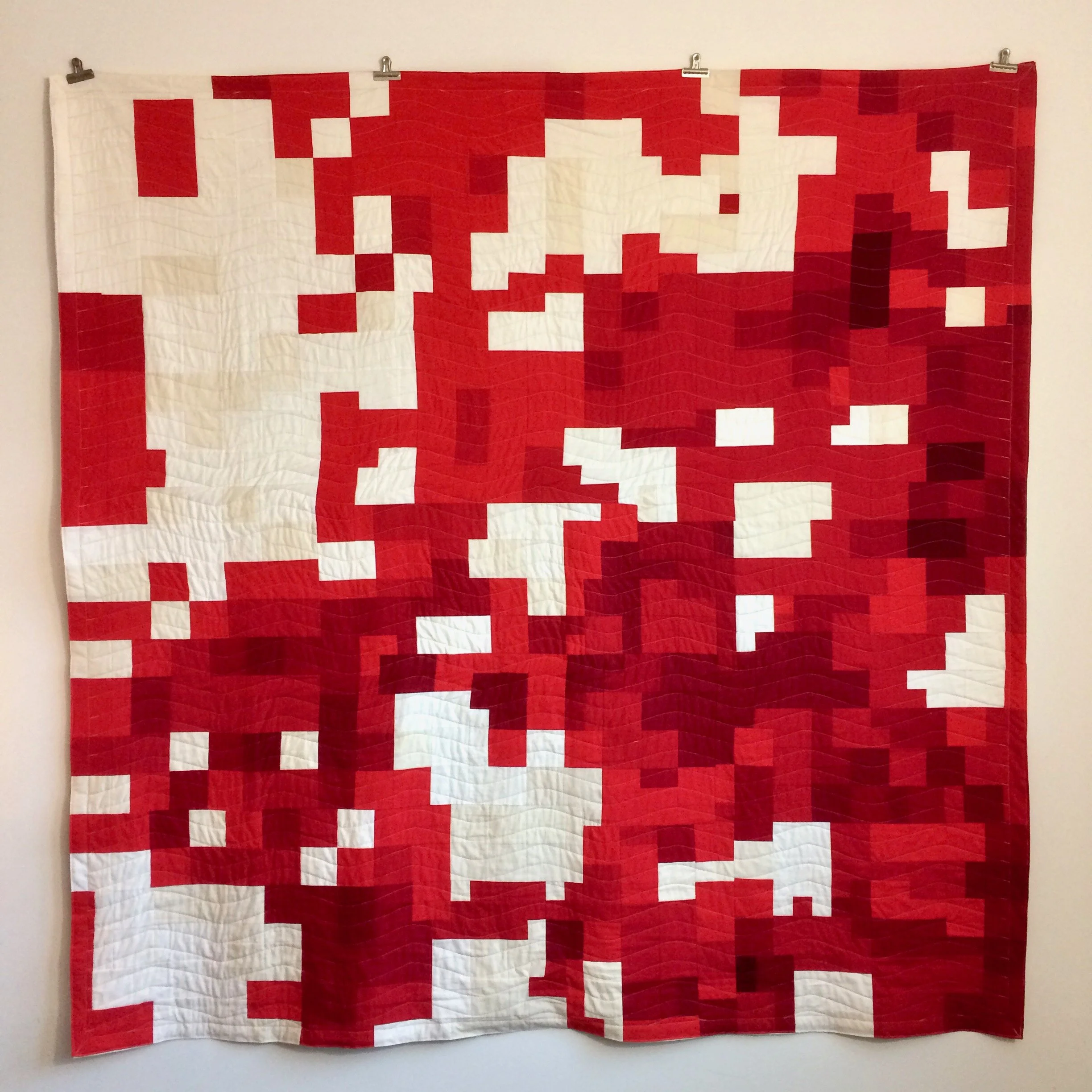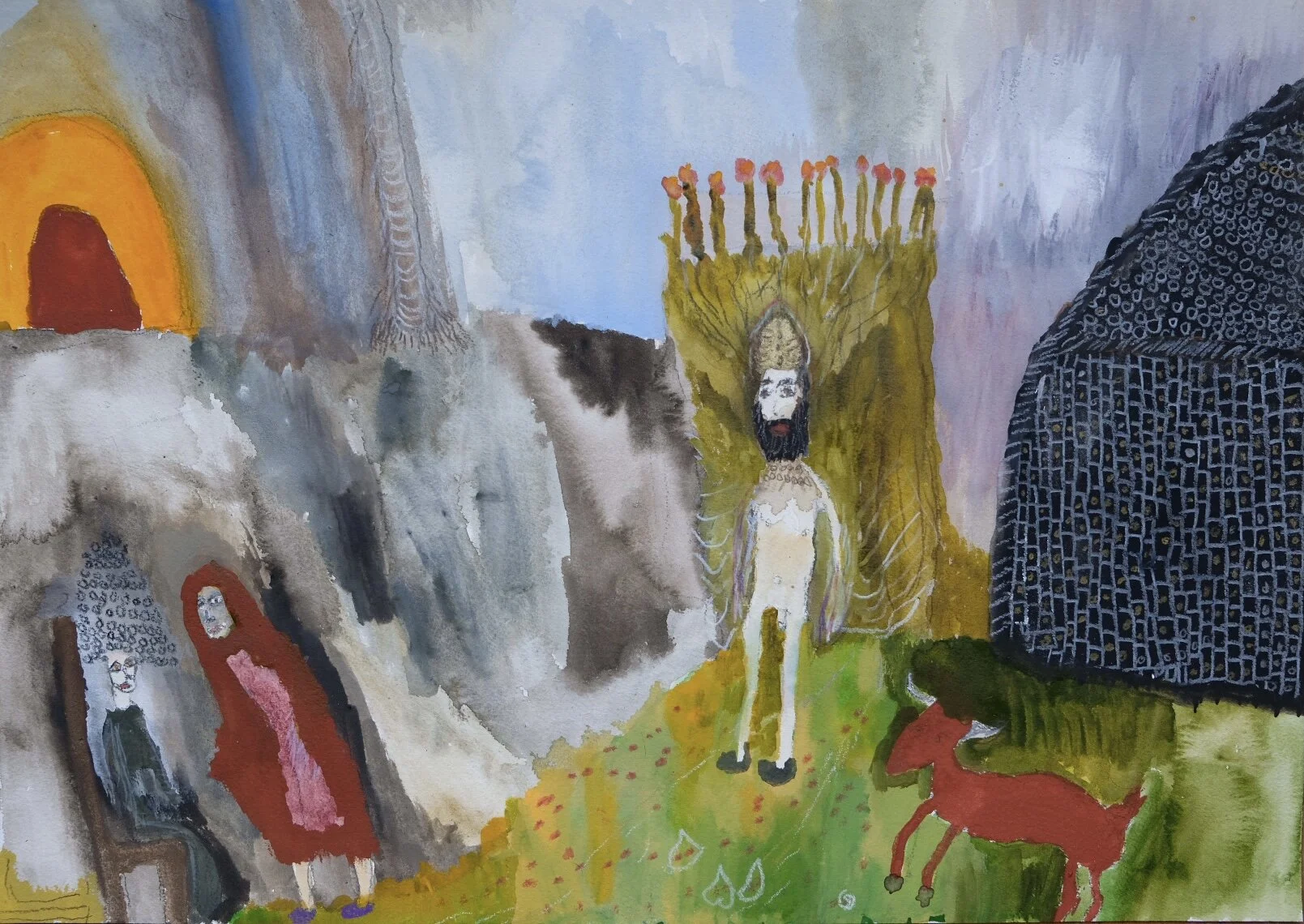Material, process, and intuition are core concepts in the sculpture of Steve Bartlett. Intentionally ambiguous, his work draws on elements of abstraction, the human body, and nature.
Read MoreThe print We Gonna Be Alright is a digital piece created during the first two weeks of quarantine, when every day was clouded with an uncertainty that permeated throughout every facet of life.
Read MoreGreta Bank’s sculpture, performances, and installations often use both topical and historical content to provoke social inquiry. Bank describes her work as visual essays, positioning her audience to reflect on diverse matters such as environmental corruption, mass consumption, and social constructs.
Read MoreThe abstract paintings of Henry Austin aim to lay bare what it means to him to be alive. He likens the intuitive act of painting to dance, recalling the performative nature of 20th-century action painters.
Read MoreAnna Dibble’s winsome world of imaginary climate-based landscapes speaks to people experiencing both vulnerability and resilience. We see them in boats on what she calls ‘early oceans’ and we see them walking alone with a dog in beautifully spare but perhaps wounded surroundings.
Read MorePerformance artist and sculptor Deborah Wing-Sproul reflects on social, cultural, economic, and political inequities amplified by the events of 2020 in her new work, Meet me at the pool. This performance and sculpture are informed by community lockdowns and isolation as well as the tension between presence and absence. The swimming pool—a place of social exclusivity and a sign of wealth and leisure—is the starting point of investigation.
Read MoreChristopher Dudley based this quilt off an infographic about government benefits in The New York Times on February 12, 2012. The United States map illustrates areas (based on a state’s counties) that rely or don’t rely on government benefits. Dudley found it saddening that the U.S., supposedly the richest nation of the world, has such disparity between rich and poor and that social programs for helping people in need are viewed so divisively. He turned to quilting to convey his dismay.
Read MoreLike many families in 2020, Gross’ family life shifted when the pandemic hit Maine. During these six months together, Gross felt the ordinary and extraordinary weave together: a birthday celebration, the Fourth of July, a Black Lives Matter protest and march organized by students at South Portland High School, among others.
Read MoreWe find mythic beings, whose bodily forms are androgynous or otherwise unspecified, caught in nightmarish landscapes—some wear masks and tease animals, others float in rivers or baths, perhaps conversing with spirits.
Read MoreIn Maine, Enrique Mendía began to experiment with making and telling tales through photographs, words, and film. His affection for fiction and for photography as a tool for documentation coalesce in Loveshack, a loose-leaf book about a love story.
Read MoreMeghan Mitchell identifies as an artist, a woman, daughter, sister, and more recently, mother. Her photography explores the meaning and significance of universal human interactions and experiences by recreating moments and inserting herself into them.
Read MoreElijah Ober’s video practice honors small creatures as proxies of encompassing ecosystems and histories. In his work, the artist co-opts, subverts, and reveres the slippery power of digital images to embody themselves and alter our physical and social structures.
Read MoreIn her work, Ashley Page explores the vulnerability, grace, and complexities of the Black experience. She believes art is a vessel used to present larger conversations about representation and visibility of the African American image, intellect, and spirit. Employing paper, fiber, and steel in her work, she envisions a world where individuals are given the autonomy to represent themselves.
Read MoreThe relationship between site, story, and mobility fuels a wide range of research and production, including the relationship between natural histories, myth, and individual story. For Poitras Santos, walking is a form of listening to a site and giving it agency in an age of climate change.
Read MoreA few years ago, she embarked on a body of figurative works, which is a longstanding tradition by Maine painters. Stanton credits this shift in her painting practice to her increased involvement with social media as well as the devolving political climate of the past four years. She likens her new painting endeavors to a “fascinating adventure: like dreaming awake.”
Read MoreGiles Timms, a digital artist based in Orono, Maine, combines media and genres into hybrid art. His work borrows from current events, specifically the terrific and terrifying absurdities of modern life, and he translates his impressions into wistful, animated films. In each animation, Timms casts a leading protagonist, or “Creep” as he refers to them, into environments that possess a familiarity with local settings yet equally surreal architecture.
Read MoreArtists’ Rapid Response Team! (also known as ARRT!) is a collective of year-round members of the Union of Maine Visual Artists (UMVA). UMVA is dedicated to upholding the dignity of artists, while creating positive social change through the arts.
Read MoreIn the fall of 2020, the Portland Museum of Art presented Mythmakers: The Art of Winslow Homer and Frederic Remington, the first exhibition to explore the unexpected resonances between the themes, artistic sensibilities, and technical processes of these two great American artists and exploring the mythologies both artists perpetuated in their work. Co-organized by the PMA, Denver Art Museum, and the Amon Carter Museum of American Art, Mythmakers situates Homer and Remington within their historical moment, highlighting moments of convergence in their biographies, their chosen subject matter, and their experimentation across media in an era of profound social change.
Read MoreWe love hearing from our colleagues about their favorite artworks in the PMA Collection. Here, Ashleigh Hill shares why she loves the haunting image of Florence Leyland by James Abbott McNeill Whistler.
Read More



















